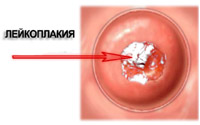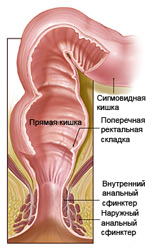Esophagus cancer - a disease having a greater geographical dependence. In which countries people are most susceptible to this disease? As a form of esophageal cancer affects the forecast of his treatment? Answers to these and other questions - read in the article.
Content
 Over the past ten years, the incidence of esophageal cancer in Russia has decreased by 23 percent in men and 35 percent in women. Despite this, the esophagus cancer continues to occupy a weighty place in the structure of oncological pathology and is 3 percent of all malignant tumors, while on the sixth in the frequency of occurrence among all diseased malignant tumors.
Over the past ten years, the incidence of esophageal cancer in Russia has decreased by 23 percent in men and 35 percent in women. Despite this, the esophagus cancer continues to occupy a weighty place in the structure of oncological pathology and is 3 percent of all malignant tumors, while on the sixth in the frequency of occurrence among all diseased malignant tumors.Cancer of the esophagus is mainly the disease of the male population over 55 years. Men sick more often women on average 5-10 times. The peak of morbidity falls at the age of 55-60 years and older, and the faces over 70 years are about 40 percent of the fallen.
All over the world, about 5.2 million deaths from malignant tumors and esophagus cancer are registered for one year - the reason is 900 thousand of them. Esophagus cancer - a disease distinguished by high mortality. About 70 percent of patients die within 1 year after diagnosis. Mortality rate is only slightly less than the incidence rate. These sad numbers are primarily associated with the fact that in 70 - 80 percent of the esophagus cancer is revealed already at the later stages of development, when to hope for a successful outcome of treatment and the patient's long life is already very difficult.
A feature of the global structure of the morbidity of the esophagus cancer is that neither one other tumor does not have such a big geographical dependence. When comparing different countries, the numbers may differ to 100 times. The highest incidence rate of the esophagus cancer in China, Iran, the states of the Central and Central Asia - about 100 people per 100 thousand people are ill. In the regions with the lowest level (Armenia, Mali, Israel, Vietnam), this indicator is below almost 100 times and is approximately 1.7-2.2 cases per 100 thousand population per year. In our country, 6.8 cases of the disease of the esophagus cancer per 100 thousand population per year are recorded, while the maximum incidence is observed in Yakutia, Tuva (up to 10 per 100 thousand per year), and the lowest - in the North Caucasus (4 per 100 thousand per year). The remaining regions of Russia have an indicator of about 6-8 per 100 thousand population per year.
Classification of the cellular structure of the tumor is used to assess the aggressiveness of its growth and development. The highly differentiated embodiments of the esophagus cancer are distinguished (when tumor cells are not very different from normal stomach cells), moderately differency (average degree of difference), low-differentiated and undifferentiated (in this case, cancer cells are almost completely losing their «Similar to» on those of which they occurred). Highly differentiated esophageal cancer variants are characterized by a slower growth rate and metastasis. Undifferentiated forms, on the contrary, grow more quickly and aggressively, they used to metastasize and differ in the worst forecast. In 80-90 percent of cases of esophageal cancer, it grows from a flat epithelium (flat-belling cancer), iron-free cancer (similar to the stomach cancer) is observed in 7-10 percent of cases.
The most important classification of esophageal cancer (like any other malignant tumor) is TNM classification. It is developed by the international anti-cancer union and is used worldwide. With it, it is determined by the prevalence of the tumor on the stomach and human body and the statistical forecast of the treatment result. TNM letters - this abbreviation of Latin words Tumor (tumor), nodulus (node - in this case there are lymphatic nodes), metastasis (metastases). Accordingly, the classification reflects the depth of germination of the tumor into the esophagus wall (index T), the presence and number of affected lymph nodes (index n) and the presence or absence of tumor nodes - metastases in other organs (index m). Each such characteristic is denoted by the corresponding digit near the title Latin letter, for example T3 N1 M0, T1 N0 M0, T3 N2 M1, and so on. The combination of TNM values is determined by the stage of the esophagus cancer.
The esophageal cancer distinguishes the stages from 0 to 4. Stage 0 - this is the earliest form of esophageal cancer. With it, the tumor is very small, located in the most surface layers of the inner shell of the esophagus and does not affect lymph nodes and other organs. The first, second and third stages are more common cancer forms. With them, germination of the wall of the esophagus is deeper (up to the exit to the outer shell) and there may already be the lesion of the accumulative lymph nodes. At 4 stages, in almost all cases, metastases appear in other organs (liver, lungs, bones and so on). Accordingly, the stage varies and the forecast of the treatment result. The best forecast for 0 and the first stage, resistant cure can be achieved about 90 percent of patients. At 2 and 3 stages, the forecast is worse, but there is a chance of a prosperous outcome. With 4 stages to help a person get rid of the esophagus cancer and even achieve many years of remission (sick stop) is almost impossible.









